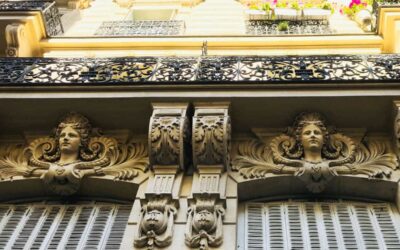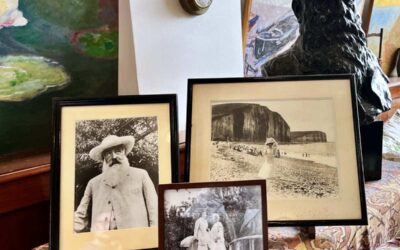One of the smallest museums in Paris, the Musée de l’Orangerie is nonetheless home to one of the most celebrated art collections in the world.
Located in the 1st arrondissement of Paris, the Orangerie museum features prominently the works by Claude Monet, one of the founders of French Impressionist art. The museum is the permanent home of the artist’s large water lilies paintings along with artworks of famous artists like Picasso and Renoir.
Situated on two floors, one of which is underground, the building was never intended to be a museum. It was actually meant to be a storage facility for the royals.
And given that royal connection, it is amazing that the building is standing at all. Let’s explore the history of the Orangerie museum, what to see there today, and whether it is worth a visit. Allons-y!
Construction for the Storage of Citrus trees
Emperor Napoleon III had the Orangerie built in 1852 to store citrus trees from Tuileries garden to protect them from the cold in the winter. Before the Orangerie was built, the trees were stored in the Grande Galerie of the Louvre.
It was built out of glass on the south side where the River Seine was, to allow light to the trees. The opposite (north) side was almost completely windowless to protect the citrus trees from the wind.

Axe Historique of Paris
The location of the Orangerie is not by accident. It is on the grounds of the Tuileries Garden and is not only near the Louvre museum, but in the center of the city, very close to some of the most famous sights in Paris.
It is in a direct line from Rue de Rivoli to the Place de la Bastille on the east, where the French Revolution started with the storming of the Bastille, at a distance of about 1.5 miles (2.5km).
In addition, on the west if you continue in a straight line on Rue de Rivoli for 1 mile (1.5km), you arrive at Place de la Concorde, which is where King Louis XVI and Marie-Antoinette were guillotined.
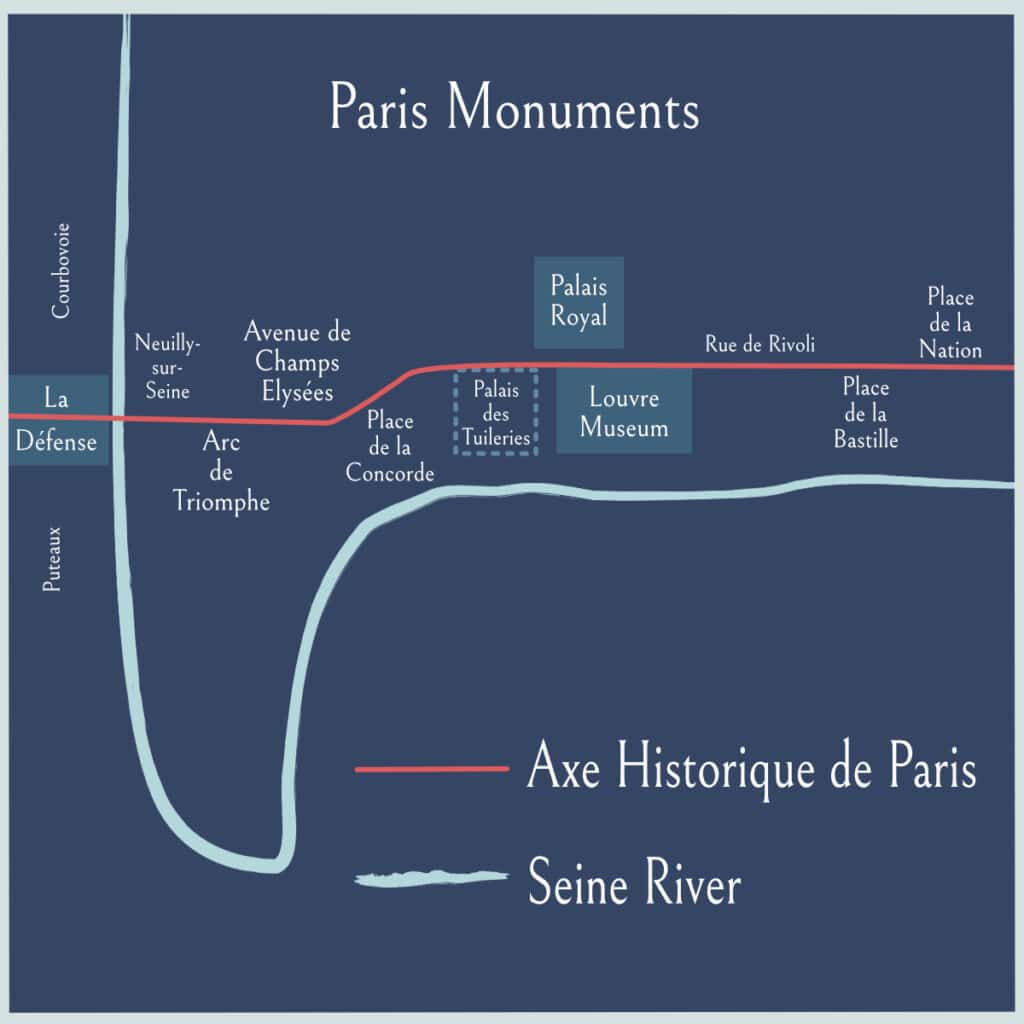
In later centuries, the Axe Historique was extended. If you go straight past Place de la Concorde (with a few meters deviation to follow the line of the Seine), you will head towards the Champs Elysées, Arc de Triomphe, and La Défense.
Claude Monet’s Waterlilies
After successive revolutions and changes in government, in 1921, the Orangerie came under the direction of the Under-Secretary of State for Fine Arts, along with the building next door, the Jeu de Paume.
Its was already being used to exhibit living artists, when it received an unexpected donation. Claude Monet, who was already a celebrated artist in France at the time, donated to the République several large paintings showing the lifecycle of water lilies.
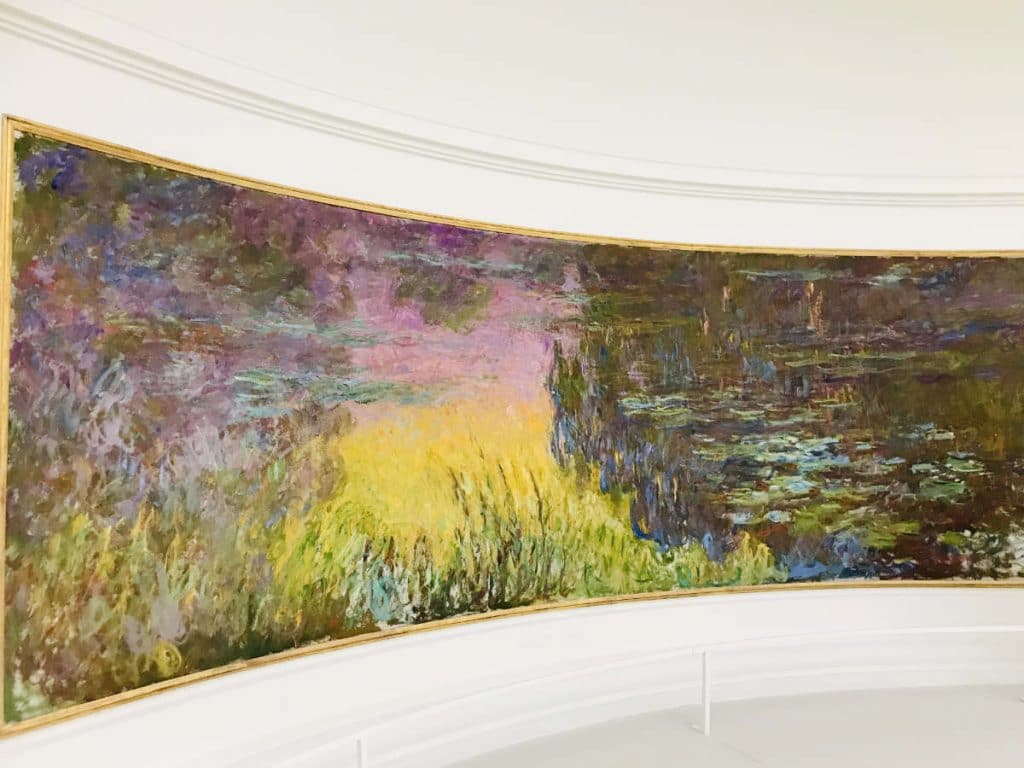
At the time Monet was in his eighties, and was going blind. It would be his good friend, Prime Minister Georges Clemenceau who would make several trips to Giverny and convince Monet to donate his paintings for display in the Orangerie.
The orange trees were removed and two large oval rooms constructed to accommodate the paintings, forming the sign of infinity. The rooms are oriented east-west, in the direction of the sun, thus fitting into the historic axis of Paris as well.
The inauguration at the Musée de l’Orangerie would take place 6 months after the death of Monet, and in the presence of Georges Clemenceau. The paintings are considered one of the country’s greatest treasures.
During the war
During the occupation of Paris in WWII, the German sculptor Arno Breker, who was official artist of the Third Reich was allowed to exhibit at the Orangerie. His paintings aimed to show the greatness of art from the German Reich (as opposed to so-called “ degenerate” art), promoting their ideology.
In 1946, it was at the Orangerie museum that the masterpieces seized or sold under duress from French Jewish families were displayed, while they waited to be reunited with their rightful owners.
Other Impressionist Artists: Cézanne, Picasso, Renoir and more
While the works of Monet occupy the main floor of the Orangerie, the underground level contains the artworks of a host of other impressionist and post-impressionist artists.

Many of the paintings come from the Jean Walter and Paul Guillaume Collection, which belonged to Domenica Walter.
Her 1st husband Paul Guillaume was an art dealer whose art collection she inherited, and her 2nd husband Jean Walter was a rich industrialist who continued to fund her passion for art.
The collection is made up of 156 paintings by fourteen different artists which include numerous artworks by Paul Cézanne, Paul Gauguin, Marie Laurencin, Henri Matisse, Amedeo Modigliani, Claude Monet, Pablo Picasso, Auguste Renoir, Henri Rousseau, and more.
The Orangerie museum also holds temporary exhibitions on occasion that are included in the price of entry.
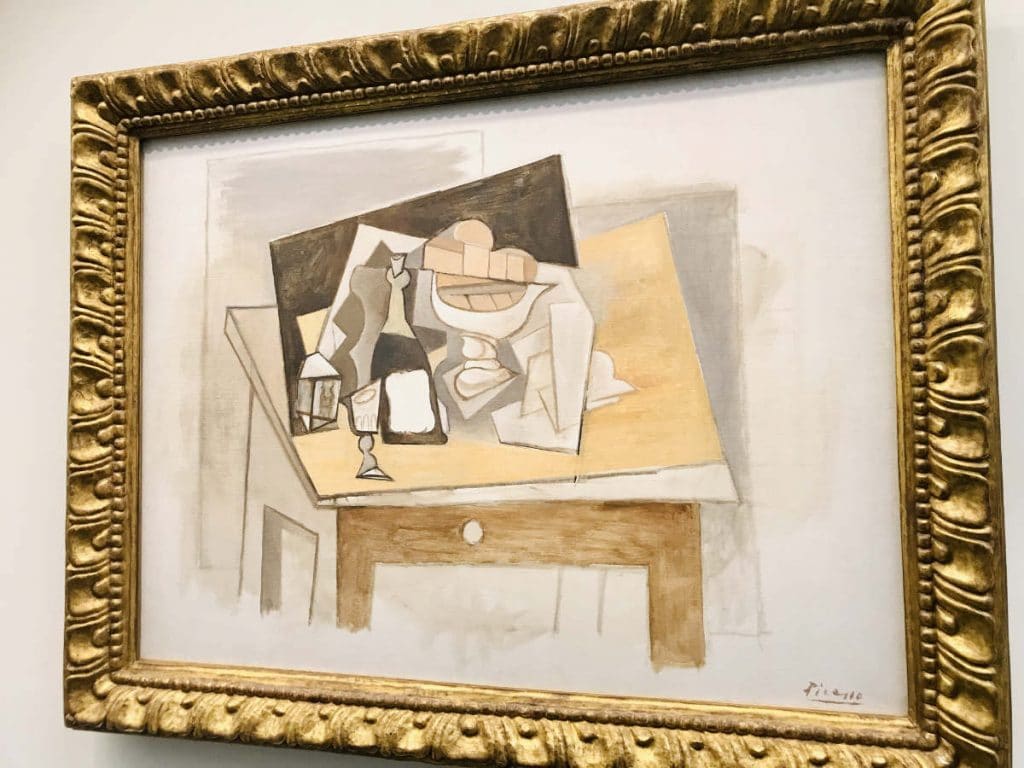
Is the Musée de l’Orangerie worth a visit?
If you love impressionist paintings but don’t have the time to go to Musée d’Orsay, you will love the Musée de l’Orangerie. The museum is also small enough to just keep the attention of young children. (The Musée Picasso in the 3rd arrondissement is also a similarly small museum that is bound to please.)
When is the best time to go?
The Orangerie requires timed entrance tickets so it does not get overcrowded. I would recommend booking at least a few days in advance, as it is quite a popular museum within Paris, with many people combining Musée d’Orsay and Musée de l’Orangerie tickets.
Where to get tickets?
You can get combined skip-the-line tickets for Orsay and Orangerie museums, or just the Orangerie here.

If you enjoyed that article, you may enjoy reading more about top things to do in Paris. A bientôt!


